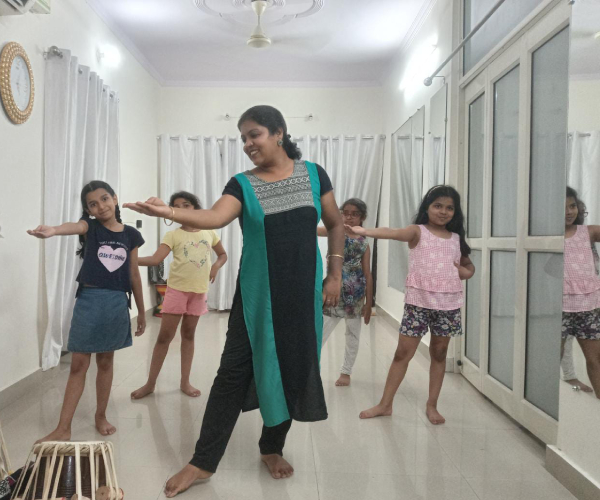(For All Age Group)
Kathak & Semi- Classical
Institute foundation date 1st September 2017 is having a vision and mission to reach to all the aspirants of Dance & Music followers, lovers and people who are still searching something good in them and to do something better in the world of Dance , Music & Art
Kathak is one of the major classical dance forms of India, originating from the northern regions of the country, particularly in the states of Uttar Pradesh and Rajasthan. It is characterized by its intricate footwork, graceful movements, rhythmic patterns, expressive gestures, and storytelling aspect. Kathak has both Hindu and Muslim influences and is deeply rooted in the cultural traditions of North India.
Historically, Kathak was performed in the royal courts of the Mughal emperors as a form of entertainment. Over time, it evolved into a highly sophisticated and expressive dance form. Kathak dancers, known as Kathakars or Kathakalis, undergo extensive training to master the complex footwork, rhythmic patterns, and facial expressions.











The dance form incorporates elements of both Nritta (pure dance) and Abhinaya (expressive dance). Nritta focuses on intricate footwork, spins, and rhythmic patterns, often accompanied by the tabla (a pair of drums) and other percussion instruments. Abhinaya involves storytelling through gestures, facial expressions, and body movements, often accompanied by live music, including instruments like the sitar, sarod, and flute.
Kathak performances typically include a repertoire of different compositions, such as thumris, dadras, taranas, and bhajans. The dancers often wear traditional costumes, such as a flowing lehenga (skirt) or sari for women, and a kurta and pajama or dhoti for men. The performers also adorn themselves with jewelry and accessories, including anklets with bells called ghungroos, which produce rhythmic sounds with every movement.
In recent times, Kathak has gained popularity not only in India but also worldwide. Many renowned Kathak dancers have contributed to the preservation and promotion of this art form. The style has also been adapted and fused with other dance forms, creating innovative and contemporary interpretations while maintaining the essence of Kathak.
Overall, Kathak is a captivating dance form that combines technical skill, grace, storytelling, and a deep connection to Indian cultural traditions. Its rich history and versatility continue to inspire both dancers and audiences around the world.
